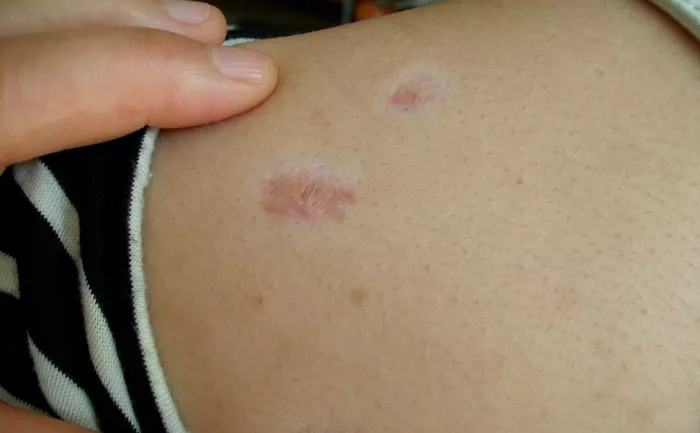Scar tissue is a natural part of the body’s healing process, forming after injuries and surgeries. The journey to recovery often involves not just the initial healing but also addressing the changes in tissue texture over time. One of the commonly asked questions in this context is, “How long does it take for scar tissue to soften?” Delving into the intricacies of scar tissue formation and its subsequent softening is essential for individuals navigating the aftermath of wounds and surgical procedures.
Formation of Scar Tissue: A Complex Process
To comprehend the timeline associated with the softening of scar tissue, it’s crucial to first understand how scars form. When the skin undergoes trauma, whether from a cut, burn, or surgery, the body initiates a complex healing process. Fibroblasts, specialized cells in connective tissue, produce collagen to mend the wound. However, the collagen fibers formed during this repair process are often different from the normal skin structure, resulting in the formation of scar tissue. The initial days and weeks post-injury or surgery are marked by the maturation of this scar tissue, setting the stage for the subsequent softening process.
The Early Days: Initial Changes in Scar Texture
In the immediate aftermath of an injury or surgery, the scar tissue is often characterized by its rigidity and lack of pliability. This is a natural response as the body rushes to seal the wound and protect the underlying tissues. The initial texture of the scar is influenced by factors such as the depth and nature of the wound, as well as individual variations in healing responses. During this early phase, patients may wonder how long it takes for scar tissue to soften, as the stiffness and tightness can be a source of discomfort and limited mobility.
Weeks to Months: Maturation and Consolidation
As the days turn into weeks and months, the scar tissue undergoes a maturation process. Collagen fibers within the scar continue to reorganize and align themselves more closely with the normal skin structure. This phase is critical in determining the long-term characteristics of the scar. The stiffness begins to give way to a more supple texture, but the speed at which this happens can vary widely among individuals. Factors such as age, overall health, and the specific location of the scar play pivotal roles in influencing the duration it takes for scar tissue to soften during this phase.
Physical Therapy and Scar Tissue Softening: A Synergistic Approach
For those eager to expedite the softening of scar tissue, incorporating physical therapy into the recovery process can be a game-changer. Physical therapists employ a range of techniques to address scar tissue, such as massage, stretching exercises, and manual manipulation. These interventions not only aim to enhance the flexibility of the scar but also contribute to minimizing adhesions and promoting blood circulation. Patients often find themselves wondering how long it takes for scar tissue to soften with physical therapy, and the answer lies in the collaborative effort between therapeutic interventions and the body’s natural healing mechanisms.
Patience as a Virtue: Scar Tissue Softening Beyond the Surface
Softening of scar tissue is not solely about the external texture that is palpable to the touch. It extends beneath the surface, involving intricate changes in the composition and alignment of collagen fibers. While surface softening may become noticeable within weeks to months, the complete remodeling of scar tissue can take much longer. Understanding the depth of this process is crucial for managing expectations and appreciating the body’s resilience in gradually transforming scar tissue into a more pliable and inconspicuous form.
Factors Influencing Scar Tissue Softening: A Multifaceted Landscape
The timeline for scar tissue softening is influenced by an array of factors, making it a multifaceted and individualized journey. Age, genetics, overall health, and the type of injury or surgery all contribute to the variability in softening rates. Younger individuals often experience quicker softening due to their more robust healing capacities, while older individuals may find the process to be more prolonged. Moreover, scars resulting from more invasive surgeries may require an extended duration for softening compared to minor injuries. Acknowledging this diversity is crucial for both healthcare professionals and patients seeking answers to the question of how long it takes for scar tissue to soften.
Postoperative Care and Scar Management: Optimizing the Softening Process
Surgeons and healthcare providers play a pivotal role in optimizing the softening process of scar tissue through comprehensive postoperative care and scar management strategies. From the choice of sutures to wound care protocols, these decisions can significantly impact the ultimate texture of the scar. Patients are often advised on scar massage techniques and the application of topical treatments to facilitate softening. The collaborative effort between healthcare professionals and patients in the postoperative phase is instrumental in achieving favorable outcomes in scar tissue texture.
Complications and Challenges: When Scar Tissue Refuses to Soften
In some instances, scar tissue may exhibit resistance to softening despite adherence to recommended interventions. This phenomenon can be attributed to various factors, including excessive collagen deposition, abnormal scarring tendencies (such as keloids or hypertrophic scars), or underlying medical conditions. When faced with challenges in scar tissue softening, healthcare professionals may explore advanced treatment modalities such as laser therapy, corticosteroid injections, or surgical revision. Understanding the potential roadblocks in the softening process empowers both patients and healthcare providers to navigate complications effectively.
The Psychological Aspect: Navigating Emotional Responses
Beyond the physical aspects of scar tissue softening, it is essential to acknowledge the psychological impact scars can have on individuals. Questions about how long it takes for scar tissue to soften often stem from a desire for aesthetic normalcy and a return to pre-injury or pre-surgery appearance. Addressing the emotional aspects of scarring involves open communication between healthcare providers and patients, emphasizing realistic expectations, and providing support through the evolving phases of scar healing. In doing so, the journey becomes not just a physical recovery but a holistic process encompassing both body and mind.
Conclusion
In conclusion, the question of how long it takes for scar tissue to soften is inherently complex, with no one-size-fits-all answer. The softening process is dynamic, influenced by a myriad of factors that contribute to individualized timelines. From the initial days of wound healing to the maturation and consolidation phase, and the potential challenges in scar tissue softening, the journey is multifaceted. Patience, coupled with a proactive approach to scar management, allows individuals to navigate this process with resilience and optimism. As we continue to unravel the intricacies of scar tissue dynamics, a comprehensive understanding empowers both healthcare professionals and patients on the quest for optimal healing and recovery.
[inline_related_posts title=”You Might Be Interested In” title_align=”left” style=”list” number=”6″ align=”none” ids=”3856,3854,3852″ by=”categories” orderby=”rand” order=”DESC” hide_thumb=”no” thumb_right=”no” views=”no” date=”yes” grid_columns=”2″ post_type=”” tax=””]

































